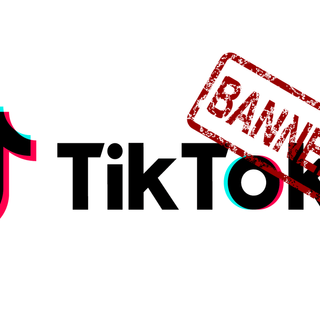
Netflix’s ‘One Day at a Time’ Shows There’s No One Right Way to Cope With Mental Health Issues
The show “focuses on the individual’s non-linear journey, valuing their discovery of coping strategies, resilience, hopes, and aspirations.”

In the first season of Netflix’s One Day at a Time, protagonist Penelope’s mother, Lydia, better known as Abuelita in the show, is heard saying, “You Are Taking The Dro-gaas (Drugs).” She is expressing the horror she experiences on finding out that her daughter is taking anti-depressants. As the show progresses, we see her coming to terms with her daughters’ mental health. The show (based on Norman Lear’s sitcom that goes by the same name), created by Gloria Kellet and Mike Royce, portrays a modern American family of Cuban origin. The series’ has multiple main characters and depicts the life of Penelope (played by Justina Machado) who is a war veteran, currently working as a nurse and raising her two children (Elena and Alex, played by Isabella Gomez and Marcel Ruiz respectively), with the help of her flamboyant mother Lydia (played by Rita Moreno), who moved to the United States after fleeing communist Cuba in the early ’60s. It deals with important issues of gender identity, consent, feminism, migration and mental health with utmost sensitivity, with more than just a humorous tinge that will make you laugh until you cry. The show ran through three seasons on Netflix, after which the cancellation of its fourth season was met with major uproar in the internet community.
Mental health has long been out of niche academic spaces, and thrown into the open arms of pop culture with pieces like This is us, Bo Jack Horseman, 13 Reasons Why, and Bollywood movies like Dear Zindagi. Depictions of mental health in pop culture are crucial to begin conversations, bust myths, correct representation and address stigma surrounding diagnostic labels, therapy and medication. Pop culture, however, also faces sharp criticism for its romanticized, stigmatizing and unrealistic portrayal of mental health and illness. Not only does One Day at a Time address barriers to accessing mental health care for minority communities, it also provides nuanced depictions of mental health and illness.
Related on The Swaddle:
It’s Time for a More Humane Approach to Mental Health Care
This nuanced approach, referred to as a ‘recovery-oriented approach’ in mental health practice, goes beyond simply a narrow focus on remission from the symptoms of illness, to define recovery. It focuses on the individual’s non-linear journey; valuing their discovery of coping strategies, resilience, hopes, and aspirations. For instance, in the first season, Penelope is seen struggling with depression and anxiety. Through the three seasons, we get to see how Penelope’s journey with mental illness is full of ups and downs, and is a process of self-acceptance, of understanding her illness and helping those close to her to understand it as well. In an episode titled ‘Hello Penelope,’ she goes through a downward spiral following her decision to quit therapy and medication. Coming to realize that she ‘isn’t okay’ and needs help, she also learns how difficult it was to explain her deteriorating mental health in the light of her life, which everyone reminded her was going great at the time.
Penelope’s journey is only one of a kind; Recovery is a complex process and no two people experience it the same. While Penelope is stuck in this web of dissonance, another show This is Us portrays the mental health struggle of one of its principle characters in a different, yet similarly responsible way. Randall (played by Sterling K. Brown) is shown to be in a constant struggle with anxiety, ever since his childhood. However, while he is shown to be this ‘stronghold’, who keeps it together (an ideal rooted in gendered undertones); there are particularly stressful time periods (arrival of a newborn, work-related stress) that lead him to experience panic attacks. Both Penelope and Randall’s stories go to show how diverse and dynamic human behaviour and emotions are, on their journey through the good, bad and okay that life has to offer. This kind of portrayal serves to break from ‘medical’ pigeon-holed diagnostic categories.
Part of seeing recovery as being non-linear is to also understand that individuals experiencing mental illness are not slaves to their symptoms. Such portrayal highlights the importance of individual choice and agency in understanding their own needs, assessing their social situation and illness. One Day at a Time portrays Penelope’s journey from starting to take anti-depressants, to finding solace in group therapy and understanding how her mind and body react to discontinuing medication. Beginning therapy and accepting one’s illness is also not completely black and white and neither can it be seen as a ‘quick fix’. Penelope’s process of self-acceptance did not end at acknowledging her problem and seeking help for it. She realizes residual feelings of shame about being ‘mentally ill’ persist even when she decides to tell her children about her illness.
Related on The Swaddle:
Small, Daily Efforts Can Improve Mental Health and Well‑Being
Other lauded pop culture pieces, such as the Netflix movie To the Bone ( which is about a young girl, Eli, played by Lily Collins, suffering from Anorexia Nervosa) is unable to highlight the character’s ‘non-linear’ journey. It fails to let Eli’s voice be heard until her dramatic moment of realization in the climax. Moreover, it assumes a very moral stance in how her family and therapist blame her for not wanting to ‘get better’. On the contrary, One Day at a Time, in the episode titled ‘Anxiety’ portrays how the women in group therapy choose to cope and deal with their experience of anxiety in different ways, thus acknowledging the mechanisms these women have developed in their years of living with mental health issues without creating a ‘healthy’/ ‘non healthy’ binary for coping. However, the episodeoffers a predominantly ‘chemical imbalance’ explanation to anxiety, which takes away from a ‘recovery oriented’ portrayal, and discounts the characters’ life story with the assumption that everyone sees their anxiety stemming from a biological/neurological explanation.
A ‘recovery-oriented’ portrayal of mental health depiction has very obviously been impacted by social and policy changes in mental health care. Movies like One Flew Over the Cuckoo’s Nest to Girl, Interrupted. depict persons with mental illness based within inpatient care and psychiatry wards of hospitals; web-series and movies today portray characters living with their families, committed to full-time jobs and sometimes even as being highly functional and at the top of their careers. Social support networks and a ‘recovery oriented’ stance became crucial post-deinstitutionalization when community mental health care took prominence. Cultures of recovery refer to spaces or bonds that provide individuals with support and a sense of belonging and community and aid in healing. 15 Park Avenue, for example, depicts a family’s coping and understanding of Mitali’s (played by Konkona Sen Sharma) experience with schizophrenia. In One Day at a Time, while the family is shown to be a strong supportive unit, Penelope also finds her support in therapy with a group of war veteran women who ‘get her’ and occasionally confides in her landlord, Schneider, when she thinks her family might not understand a certain experience. Where most shows/movies chose to show supportive bonds form within familial or romantic relationships, it is rather novel and refreshing to see the characters form supportive bonds that are outside of familial and romantic relationships (for example, the relationship between Penelope’s mother Lydia and her boss Dr. Berkowitz, or between Penelope and Schneider, or Schneider and Lydia).
One Day at a Time serves as a beautiful example of how mental illness is interwoven into the plot of the family drama. Even though there are entire episodes dedicated to talking about mental health, the series manages to portray its intersection with various aspects of the characters’ identities and with the circumstances that life throws them into. This kind of a depiction reaffirms that mental illness does not occur in isolation, but is intrinsically linked to a historical, political and social context. The series also has a very realistic portrayal and a casual calmness about not having a happy ending. With each passing episode, it brings in the element of hope (another aspect of the recovery-oriented approach) with how the characters are seen moving on through to the next day after having dealt (or not, which is fine too) with the issues of the previous day. It is rather crucial that mental health stays in popular media discourse and, more importantly, that it is represented in a sensitive, informative, non-moral, and non-stigmatic manner. One Day at a Time seems to be moving in the right direction.
So, HELLO NETFLIX, are you listening?
Lorelle completed an M.A. in Social work in Mental health from TISS in 2017, and has been working in the education space ever since. Her research interests include mental health, culture and gender studies. When she finds time off from smashing the dominant discourse, she sings along to sad country songs and laughs at her own jokes.
Related


Apps Like TikTok Need Parental, Not Governmental, Supervision
